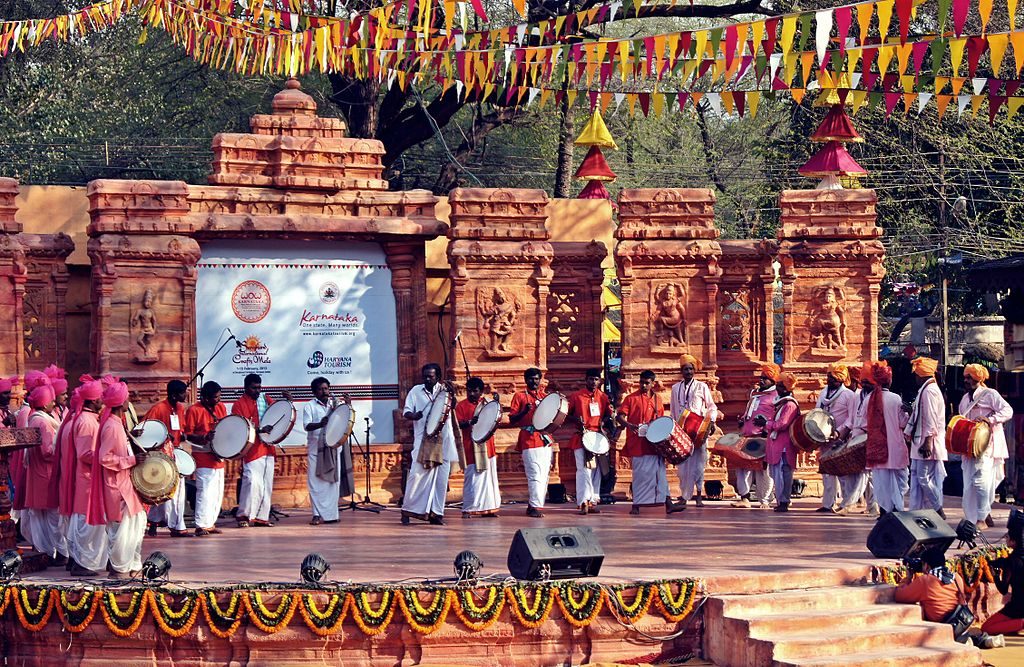India, with its different scenes, dialects, and customs, is a mixture of societies that have developed more than millennia. The extravagance of Indian culture can be followed back to old developments, and it keeps on enthralling the world with its energetic customs, fine arts, and otherworldly practices.
One of the particular elements of Indian culture is its solidarity in diversity.
With more than a billion group having a place with different ethnic gatherings, communicating in various dialects, and rehearsing assorted religions, India remains as a demonstration of the amicable concurrence of heap societies. This unity is deeply ingrained in the culture of the nation, which has been shaped by numerous dynasties and empires throughout its history.
Strict Variety and Harmony
Religion expects a critical part in Indian culture, and the country is home to huge religions like Hinduism, Buddhism, Jainism, Sikhism, Islam, Christianity, and others. A lively mosaic of customs is made by every religion's singular ceremonies, celebrations, and practices. The concurrence of various beliefs isn't simply endured however celebrated, cultivating a feeling of strict congruity.
India's celebrations are a stupendous exhibit of this diversity.
Whether it's the bright festival of Holi, the glad celebration of lights, Diwali, or the energetic Eid festivities, every celebration unites networks, rising above strict limits. The celebrations are set apart by intricate customs, customary moves, and extravagant galas, representing the common social legacy of individuals.
Creative Articulations: Dance, Music, and Visual Arts
Indian artistic expressions are basically as different as the way of life itself. Old style dance structures like Bharatanatyam, Kathak, Odissi, and others follow their beginnings to old sacred writings and are a mix of musical developments, articulations, and narrating. Each dance structure has its extraordinary style, outfits, and going with music, offering a visual dining experience that rises above time.

Indian music is an orchestra of songs and rhythms.
Traditional music, with its complicated ragas and talas, exists together with well known music sorts like Bollywood melodies, society music, and territorial tunes. Instruments like the sitar, tabla, woodwind, and veena make a mysterious mix of sounds, mirroring the social variety of the country.
The visual articulations in India have a rich history, with old sinkhole sytheses, puzzling frescoes, and frames decorating safe-havens and unquestionable objections. Customary Indian works of art like Madhubani, Tanjore, and Pattachitra grandstand the craftsmanship and refined sensibilities that have been gone down through the ages.
Culinary Pleasures: A Gastronomic Journey
Indian cooking is outstanding for its heavenly dishes, fragrant flavors, and a considerable number flavors. Every area flaunts its culinary claims to fame, affected by geology, environment, and locally accessible fixings. From the hot curries of the south to the delightful desserts of the north, Indian cooking is a gastronomic excursion that mirrors the social extravagance of the land.
The utilization of flavors is a characterizing element of Indian cooking.
Cumin, coriander, turmeric, and cardamom implant dishes with an eruption of flavors, making a tangible encounter. Road food, for example, chaat and samosas, gives a speedy and scrumptious look into the neighborhood flavors, while customary thalis offer a total feast with various dishes.
Otherworldly Legacy and Yoga
India is frequently alluded to as the origin of otherworldliness, with a rich philosophical and strict history. Philosophical debates and spiritual practices are based on the Vedas, Upanishads, and Bhagavad Gita, among other ancient writings. Yoga, beginning in old India, has acquired worldwide prevalence as a comprehensive way to deal with physical and mental prosperity.
Sacrosanct locales like Varanasi, Rishikesh, and Amritsar are profound hubs.
Pioneers from various corners of the world visit these spots looking for profound illumination and an association with their internal identities. The act of contemplation, Ayurveda, and customary recuperating techniques further enhance the profound embroidery of Indian culture.
Contemporary Difficulties and Safeguarding Efforts
While Indian culture is well established in custom, it isn't resistant to the impacts of globalization and modernization. The more youthful age, presented to a globalized world through innovation and media, wrestles with the test of offsetting customary qualities with contemporary ways of life.
Endeavors are in progress to save and advance Indian culture.
Organizations, both legislative and non-administrative, pursue shielding customary works of art, dialects, and legacy destinations. Celebrations, far-reaching developments, and instructive projects assume a pivotal part in giving the heritage to the future.

All in all, Indian culture is a unique embroidery that winds around together old practices and contemporary impacts. Its variety, versatility, and capacity to adjust make it a captivating subject of investigation for those trying to figure out the profundity and excellence of this old progress. As India keeps on developing, its social legacy stays a reference point, directing its kin towards an agreeable conjunction of the old and the new.


You must be logged in to post a comment.